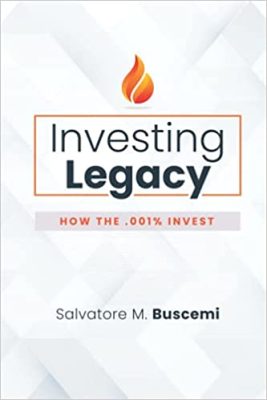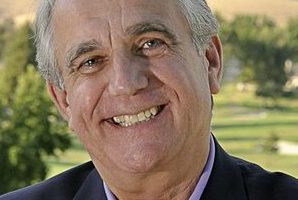Column: CEO Learnings
I noticed a sea-change in the investment landscape about 10 years ago as family offices, which were relatively unknown to entrepreneurs as a source of capital, expanded from investing solely in investment funds to investing directly in young companies. Family offices provide a wide range of services tailored to meet the needs of high-net-worth individuals, many of whom were wealth creating entrepreneurs themselves.
Family offices are typically either defined as single-family offices or multi-family offices (MFOs). Single-family offices serve just one ultra-affluent family, whereas MFOs are more closely related to traditional private wealth management practices, seeking to build their business upon serving many clients. MFOs are more prevalent due to economies of scale that allow for cost-sharing among the clientele.
As someone who has been building healthcare related companies from scratch for over 45 years, I have made it a priority to understand the family office landscape, their structure, and investment philosophy. Creating a vision, building strong teams, developing plans and budgets to support precision execution are keys to success, but it cannot be done without capital. The family office for me and for many others offers a new source of capital.
Salvatore Buscemi’s Investing Legacy: How the .001% Invest has been the most recent addition to my family office education. Buscemi  has been involved in the formation of a family office, Dandrew Partners, and then its management for over twenty years. This book will be invaluable not only for those seeking to understand this investment frontier but also for those who have created wealth and are thinking of establishing a family office to preserve their wealth.
has been involved in the formation of a family office, Dandrew Partners, and then its management for over twenty years. This book will be invaluable not only for those seeking to understand this investment frontier but also for those who have created wealth and are thinking of establishing a family office to preserve their wealth.
Investing Legacy is special as Buscemi does not dwell on portfolio allocations, return on investment, or the intricacies of wealth management but rather, he focuses on the wealth creators – what it is they want to achieve and how they want to be remembered.
Buscemi calls the top .001% “the decimals.” They are the largest holders of assets in the world. They have an annual income of $63.4 million with a net worth of at least $100 million. They mostly own and operate companies. Little more than 600 of them are billionaires. They understand the world they live in and how money works in that world. They are factory owners, technologists, e-commerce experts and use the mechanics of the financial system to their advantage.
Investing legacy
“Investing Legacy” reveals the concerns, passions, and prejudices of the decimals; their search for legitimacy; what liquidity means to them; how deals are sourced and opportunities are selected; what separates a $300 million family from a $30 billion family; how to build, stabilize and leverage one’s legacy; and why those that fail, fail.
The author shares the profile of five different legacy investors:
- The Provider who is fiscally conservative and gains status by doing good. They are not conspicuous but want you to know they are
 present in your life. They sit on boards, and you see their names as benefactors of PBS.
present in your life. They sit on boards, and you see their names as benefactors of PBS. - The Mogul who is tough and competitive. They have something to prove and will swing for the fences with high-profile and high-status investments.
- The Non-Conformist who does not tow the family line. They might be into the arts or may champion a movement. They are willing to go it alone.
- The Curator is the intellectual. While they seek to be admired, they are the least money oriented. They like to invest in things they can talk about – art, doing social good – and add to a reputation for having good taste and sophistication.
- The Documentarian/Historian who puts his/her name on everything. They are conspicuous and want to let you know they are going to leave a presence in your life.
All in all, readers interested in learning what’s really behind the curtain with family offices will not be disappointed.
Entrepreneurs will, with this book, be able to better assess which family office will be aligned with their mission, and those wealth creators who seek to either create or hire a family office will find this to be a good guide for doing this successfully.
Buscemi’s Investing Legacy is an important addition to explaining the why, what, and how of the family offices in today’s investment matrix.
Salvatore Buscemi has been a guest mentor on my radio show, The MENTORS RADIO, which is broadcast Saturdays worldwide on the Salem Radio Network in Northern California and live-streaming on iHeartRadio and TuneIn Radio elsewhere.
Past shows are archived and are available on all podcast platforms by searching for THE MENTORS RADIO/ Business. You can listen to this show by clicking on https://thementorsradio.com/learn-how-the-top-0-001-invest-and-why-its-useful-to-know-in-building-a-business-with-guest-salvatore-buscemi/
In this episode with Salvatore Buscemi, our topic is “Legacy Investing.”
RELATED RESOURCES:
THE MENTORS RADIO INTERVIEW: Learn how the Top 0.001% invest and why it’s useful to know in building a business, with Guest Salvatore Buscemi — radio interview with host Tom Loarie on The Mentors Radio
- Legacy Investing: How the top 0.001% Invest – by Salvatore Buscemi
View Articles Thomas M. Loarie is a popular host of The Mentors Radio Show, the founder and CEO of BryoLogyx Inc. (BryoLogyx.com), and a seasoned corporate... MORE »



You must be logged in to post a comment.